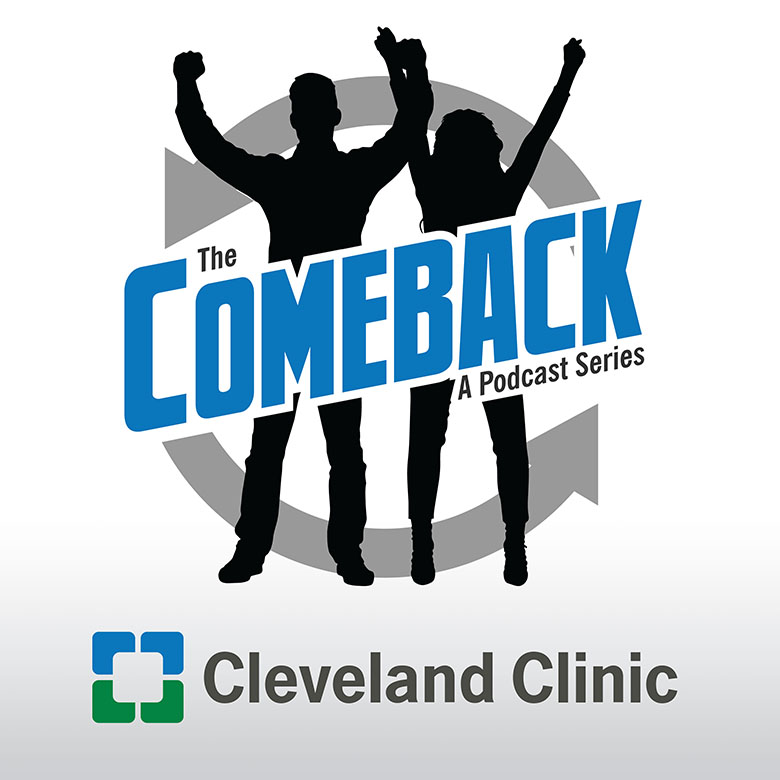Heart Failure with Preserved Ejection Fraction (HFpEF)

Heart failure with preserved ejection fraction (HFpEF) is becoming more common as a diagnosis. If you have HFpEF, you may have questions about this condition and treatment.
- What is HFpEF?
- What causes HFpEF?
- How is it diagnosed?
- Who is at risk?
- Is there anything I cando if I have HFpEF?
- Is there a treatment for HFpEF?
Doctors Tang, Bhattacharya and Bhat from our HFpEF Clinic answer these questions and talk about how the HFpEF Clinic health care providers work together to improve care for patients.
Learn more about Cleveland Clinic’s Heart Failure with Preserved Ejection Fraction Clinic
Subscribe: Apple Podcasts | Podcast Addict | Buzzsprout | Spotify
Heart Failure with Preserved Ejection Fraction (HFpEF)
Podcast Transcript
Announcer:
Welcome to Love Your Heart, brought to you by Cleveland Clinic's Sydell and Arnold Miller Family Heart Vascular & Thoracic Institute. These podcasts will help you learn more about your heart, thoracic, and vascular systems, ways to stay healthy, and information about diseases and treatment options. Enjoy.
Dr. Wilson Tang:
Hi, my name is Wilson Tang. I'm the Research Director for the Section of Heart Failure and Cardiac Transplant Medicine. And I'm delighted to actually introduce my two colleagues here, Dr. Sanjeeb Bhattacharya, as well as Dr. Pavan Bhat. We're actually going to discuss about heart failure with preserved ejection fraction today. So Dr. Bhattacharya, what is heart failure with preserved ejection fraction?
Dr. Sanjeeb Sean Bhattacharya:
So I think it is a very complex term. And I think a lot of people will think the heart's failing and not working right. And in some ways it is, but mainly it's a constellation of symptoms related to how the heart is relaxing. And the heart becomes a little stiffer, the arteries become stiffer, and it leads to this constellation of symptoms of shortness of breath, whether you're resting or walking, swelling at some times, and overall feeling fatigued. So I think it's a very complex disease process and what's been interesting is it's thought to be very simple in the beginning and we know that it's much more complicated than that.
Dr. Wilson Tang:
Yeah. And so Dr. Bhat, what causes heart failure with preserved ejection fraction?
Dr. Pavan Bhat:
Well, that's an excellent question, Dr. Tang. I think as Dr. Bhattacharya mentioned how complex of a disease this is, it also goes into how many different causes can actually lead into heart failure with preserved ejection fraction, also known as HFpEF. When we look at the different risk factors that an individual might have, one can be of an advanced age, that can be high blood pressure, being overweight, chronic kidney disease, having AFib or atrial fibrillation, or also a prior history of heart attack. So as you can see, this complex disorder has a lot of different risk factors that actually all lead into it.
Dr. Wilson Tang:
And we see it quite commonly too, isn't it?
Dr. Pavan Bhat:
Yeah, absolutely. Absolutely.
Dr. Wilson Tang:
So how do we diagnose this, Dr. Bhattacharya?
Dr. Sanjeeb Sean Bhattacharya:
It's not easy. And I think the problem is people come in with these symptoms of shortness of breath and it could be from a multitude of reasons. And really the challenge with HFpEF, or heart failure with preserved ejection fraction, is there's no one test to diagnose, as much as we'd love that to be the case. And a lot of times it requires an in-depth evaluation using blood tests, imaging studies like echocardiography and cardiac MRI, and sometimes invasive studies where we take a look at the pressures in the heart or in the coronary arteries of the heart. And that gives us a full picture of what's happening with the patient, and what's happening with the interaction with the heart and the rest of the body that's leading to these symptoms that the patients are having.
Dr. Wilson Tang:
Yeah. And sometimes we have to figure out whether it is the heart or not the heart.
Dr. Sanjeeb Sean Bhattacharya:
Yeah. And that adds to the challenge because a lot of the times when people think of shortness of breath, the first thing we want to think of is the heart as being the root cause. And sometimes doing these in-depth valuations, we can really tease out if it's something else, whether it really is a primary lung issue, or is it a constellation of lung, heart, and deconditioning, that's really creating these profound symptoms in patients.
Dr. Wilson Tang:
So Pavan, with the different causes, what are the possible lifestyle changes that patients can do if they have the diagnosis?
Dr. Pavan Bhat:
Absolutely, Dr. Tang. I think a common misconception with HFpEF, or heart failure with preserved ejection fraction, is that there's nothing that we can actually do about this. There's actually a lot of things that the patient can do in conjunction with their doctor, in order to help treat some of the risk factors that we just talked about a few minutes ago. For instance, a common question a lot of patients have is, can they exercise safely with their heart failure? And actually we actually encourage our patients to exercise. That'll likely help with their symptoms, and their quality of life. And a structured exercise plan, working with your cardiologist, will actually help with your symptoms going forward. Similarly, weight loss, it's a struggle for everyone, including myself, but patients, with their physician, can work with a structured weight loss program, which can help lose the weight, but also that'll actually help with the heart failure symptoms. So these are all different interventions that the patient and their doctor together can work on. And we're trying to work on these risk factors together.
Dr. Wilson Tang:
So with that, what are the new treatments or emerging treatments that are currently available or will be available for HFpEF patients then?
Dr. Sanjeeb Sean Bhattacharya:
Yeah. It's an exciting time because I think a lot of research, whether it's the government and the NIH to actual pharmaceutical companies who are really diverting a lot of resources in trying to treat this entity because nothing has been a magic bullet for this disease. And that's why patients get frustrated. That's why clinicians get frustrated. They just can't really move the needle on how people feel. So I think it's one, important to first delve in to make sure that the diagnosis is correct and we're not missing another type of underlying disease process. And then if everything looks like it is related to HFpEF, it's about trying to group them with people like themselves, because we know that this is a very big population of patients, and not every patient is the same as everybody else.
Dr. Sanjeeb Sean Bhattacharya:
And I think as we've gone forward over the past decade with this research, we know that you can't treat every patient with heart failure with preserved ejection fraction, like the next one. And I think that the exciting part is figuring out how we can sort of tease that out, and direct therapy targeted to that specific group, for that specific problem.
Dr. Wilson Tang:
And you and your colleagues are also implanting devices to treat these patients. And then can you tell us a little bit more about this?
Dr. Sanjeeb Sean Bhattacharya:
Yeah. So a couple of ways that at least have some data behind this is one would be using pressure sensors in the lungs to help guide our management with diuretics, meaning the water medicines we use to get rid of swelling. And the importance of these sensors are especially with patients who have a difficult time knowing how much diuretic to take, so they're getting the water off adequately and not hurting their kidneys at the same time. So I think CardioMEMS has been a great sort of addition in what we can do to manage patients and it's shown to keep people out of the hospital.
Dr. Sanjeeb Sean Bhattacharya:
And I think what's exciting is there're new devices coming out in the same vein as pressure sensors, as the same vein as some pacemakers where they're sort of taking a look at fluid status with lead impedance. So a lot of exciting things. Before people thought that there was nothing they can do with this, this was just something people lived with. And I think now what we're starting to see is, no, I think we can study this more and really see if we can help patients and treat them not the same as everybody else, but treat them as a personalized sort of individual.
Dr. Wilson Tang:
Yeah. So for research parts, there're certainly many devices and treatments that the Cleveland Clinic and other centers are also participating with the hope to try and find more options. And so many of us in our section are experts in this area, and we are collaborating together to try and work with different members of our department, as well as other collaborators to try and target this really challenging population.
Announcer:
Thank you for listening. We hope you enjoyed the podcast. We welcome your comments and feedback. Please contact us at heart@ccf.org. Like what you heard? Subscribe wherever you get your podcasts, or listen at clevelandclinic.org/loveyourheartpodcast.

Love Your Heart
A Cleveland Clinic podcast to help you learn more about heart and vascular disease and conditions affecting your chest. We explore prevention, diagnostic tests, medical and surgical treatments, new innovations and more.


